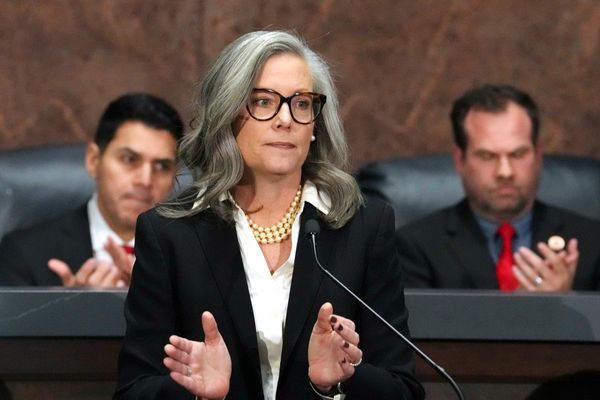
Fewer big money Premium Bonds prizes will be available from the April draw, as the prize fund rate is slashed from 4.00% to 3.80%.
Premium Bonds provider NS&I said the odds of winning will remain the same, at 22,000 to one.
The changes mean that, for example, the estimated number of £100,000 prizes will decrease from 82 in February to an estimated 78 in April.
Even with the change to the Premium Bonds prize fund rate, we are expecting more than 5.9 million tax-free prizes worth over £411 million to be won in the April 2025 draw
The number of £50,000 prizes will fall from 164 in February to an estimated 157 in April, while the number of £25,000 prizes will reduce from 328 to around 313 over the same period.
The number of £10,000 prizes will fall from 820 in February to an estimated 781 in April.
The number of £1 million prizes up for grabs will remain the same, at two.
There will be more chances to win a £25 prize, with the number increasing from 1,807,915 in February to an estimated 2,170,903 in April.
The total value of the prize pot will reduce from £430,052,425 in February to an estimated £411,118,825 in April. The number of prizes will remain around level, at 5,864,354 in February and an estimated 5,901,229 in April.
As the end of the tax year approaches, NS&I has also increased the interest rate on its Direct Isa to 3.50% AER (annual equivalent rate) from Tuesday, from 3.00%.
From March 5, the interest rate for NS&I’s Direct Saver will fall to 3.30% AER from 3.50% and the rate on Income Bonds will decrease to 3.30% AER from 3.49%.
Andrew Westhead, retail director, at NS&I, which is backed by the Treasury, said: “We regularly review our products to ensure they reflect current market conditions. The changes we are making to Premium Bonds, Direct Saver and Income Bonds rates enable us to continue to balance the interests of savers, taxpayers and the stability of the broader financial services sector.
“Even with the change to the Premium Bonds prize fund rate, we are expecting more than 5.9 million tax-free prizes worth over £411 million to be won in the April 2025 draw.”
The moves follow the recent quarter point cut in the Bank of England base rate to 4.5%.
Whenever the rate is cut it's worth considering whether you're still happy with the deal, or whether you'd prefer the certainty of a strong rate in the wider savings market
Sarah Coles, head of personal finance, Hargreaves Lansdown said: “NS&I is testing the loyalty of its premium bond holders by slashing the prize rate to 3.8%.
“It was bound to happen, because the easy access savings market has been inching south ever since this month’s Bank of England rate cut, and NS&I will be keen not to pay more than it has to.
“It’s also slashing the rate on two of its easy access savings products. Cash Isas have dodged the scythe though, and the rate has actually risen.”
She said of Premium Bonds: “The cuts have focused on the bigger prizes, in order to keep the chances of a win the same.
“However, even then, the average bond holder will win nothing in the average month. It means your savings are likely to lose money after inflation, and with every sign that inflation is on the rise, you’ll be paying an even bigger price.
“Whenever the rate is cut it’s worth considering whether you’re still happy with the deal, or whether you’d prefer the certainty of a strong rate in the wider savings market. It’s worth checking what’s available from online banks and saving platforms, where you’ll usually find the strongest deals.”
NS&I’s announcement was made as financial information website Moneyfacts said the choice of cash savings products has reached the highest on its records going back to 2007.
It counted 2,157 savings deals in February, including Isas. There were 582 cash Isa deals available, which was also a high on Moneyfacts’ records.
Rachel Springall, a finance expert at Moneyfacts, said: “The arrival of more savings providers entering the market can encourage savers to seek new brands away from the more familiar high street banks, as new challengers are more eager to attract deposits to fund their future lending.
“However, the months ahead will be challenging for providers to keep ahead of their peers to entice new business, but also to adjust their rates as interest rates are expected to fall.”
Ms Springall added: “Savers must ensure they choose a deal which pays a competitive rate of interest but also provides a real return against the eroding impact of inflation, which is expected to rise this year.”







